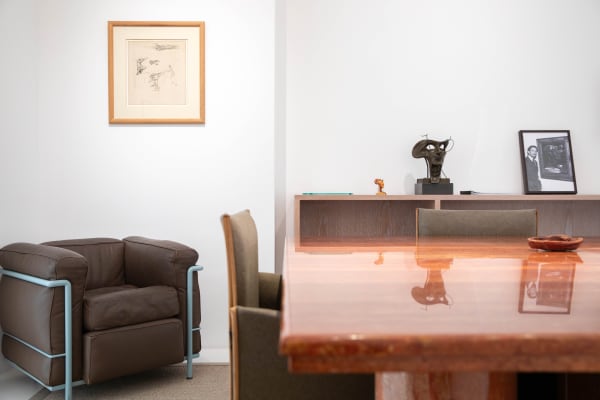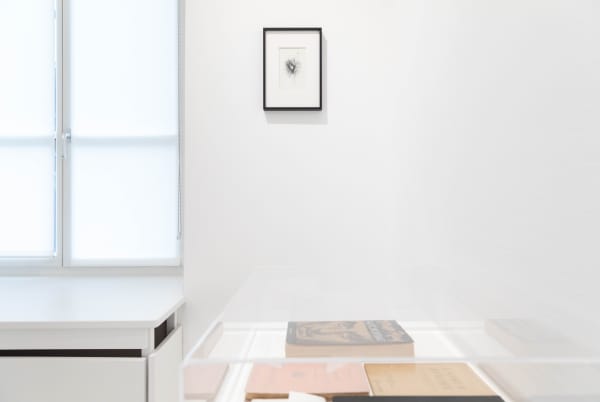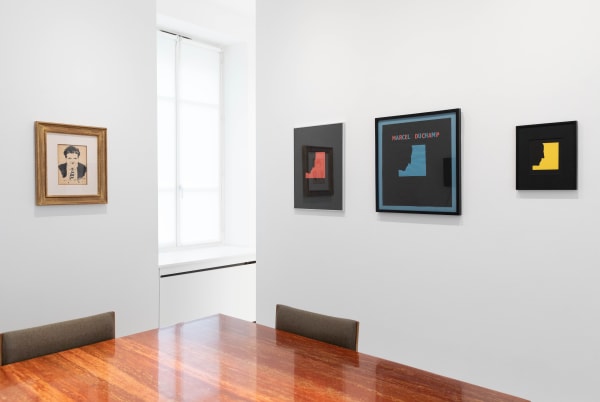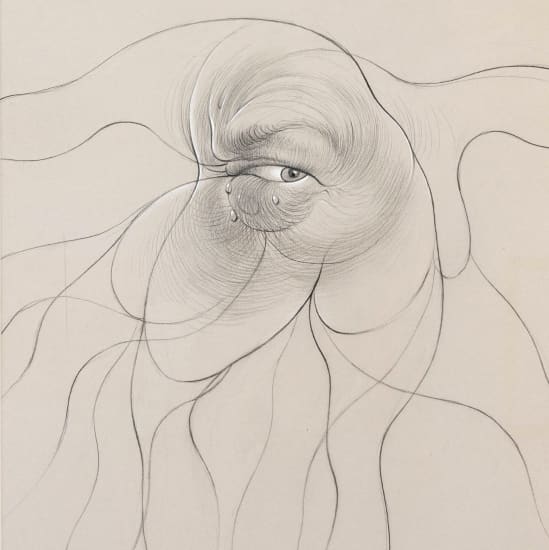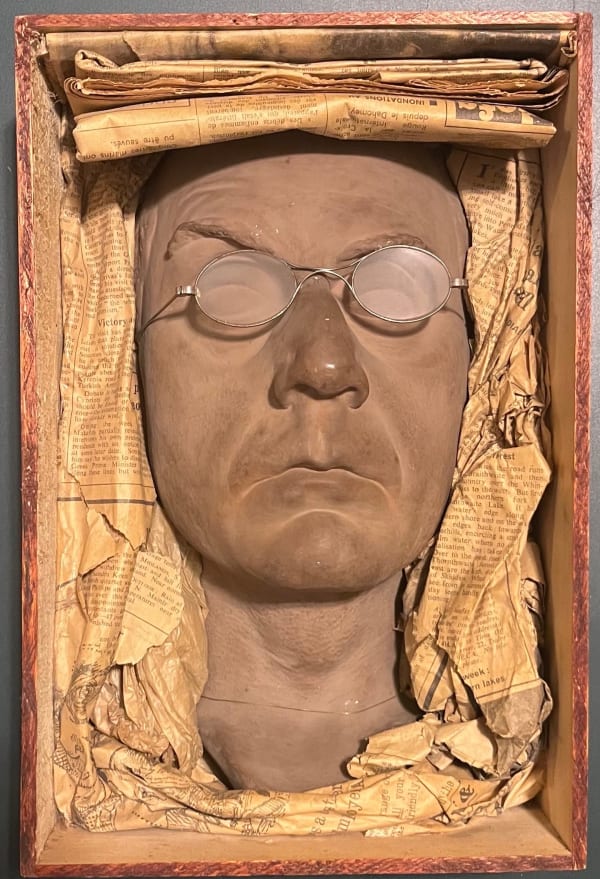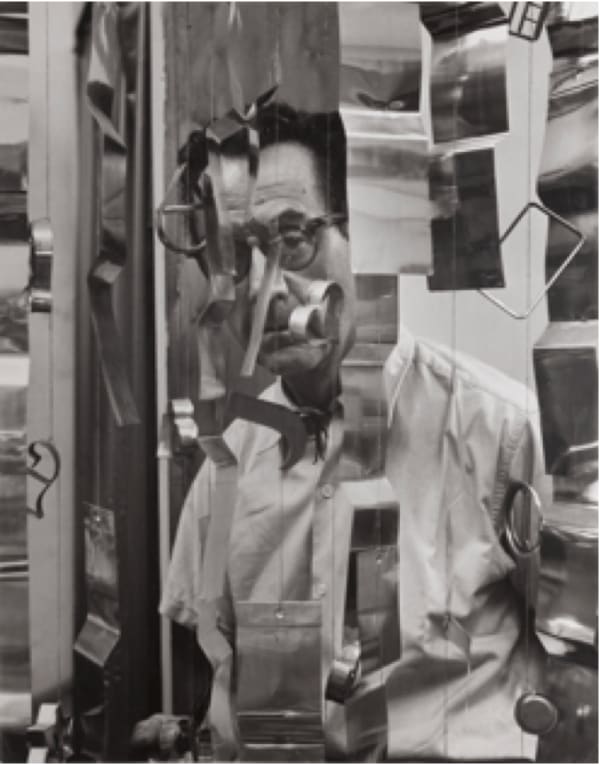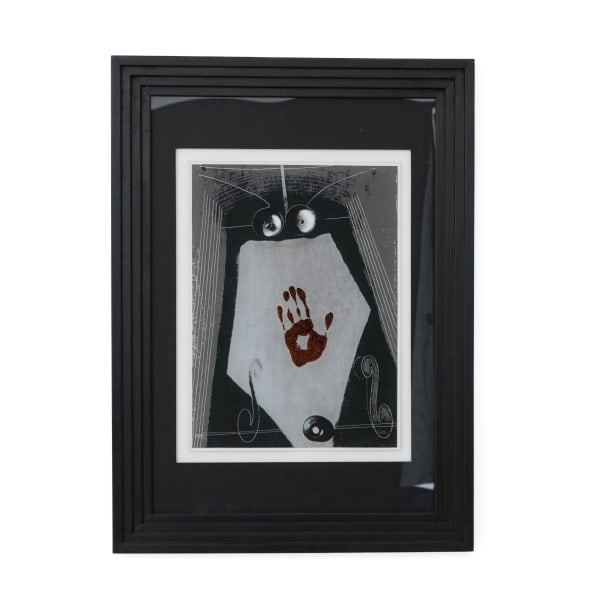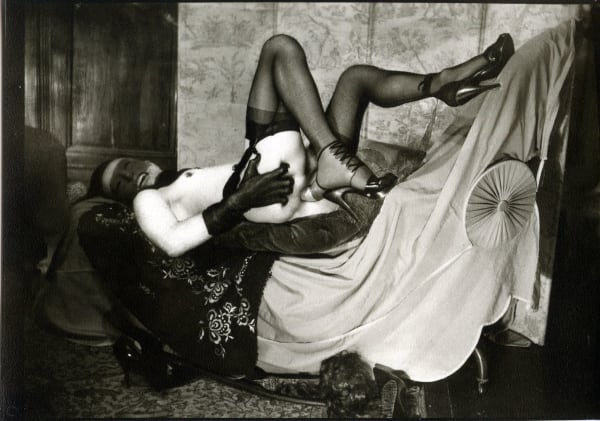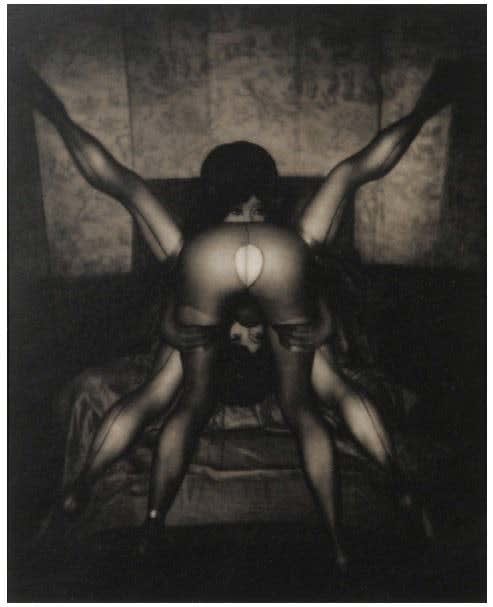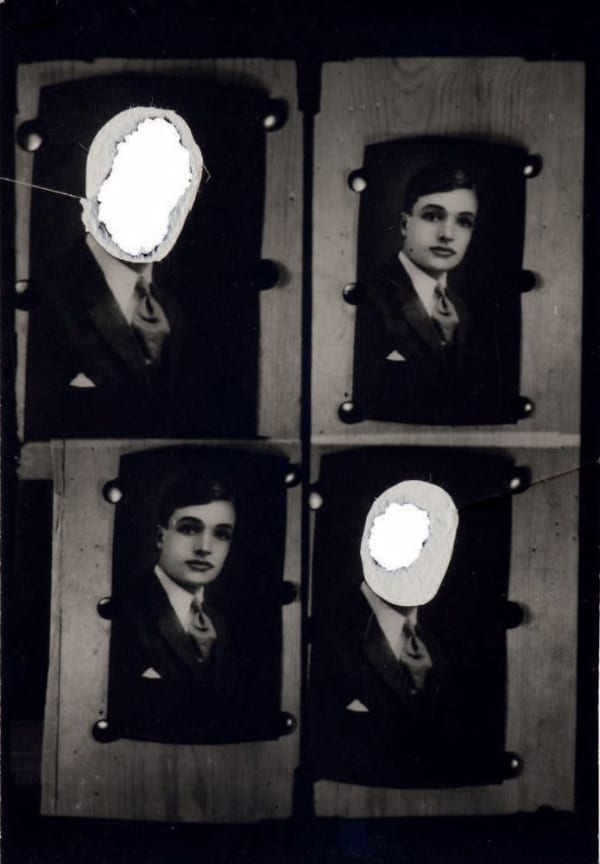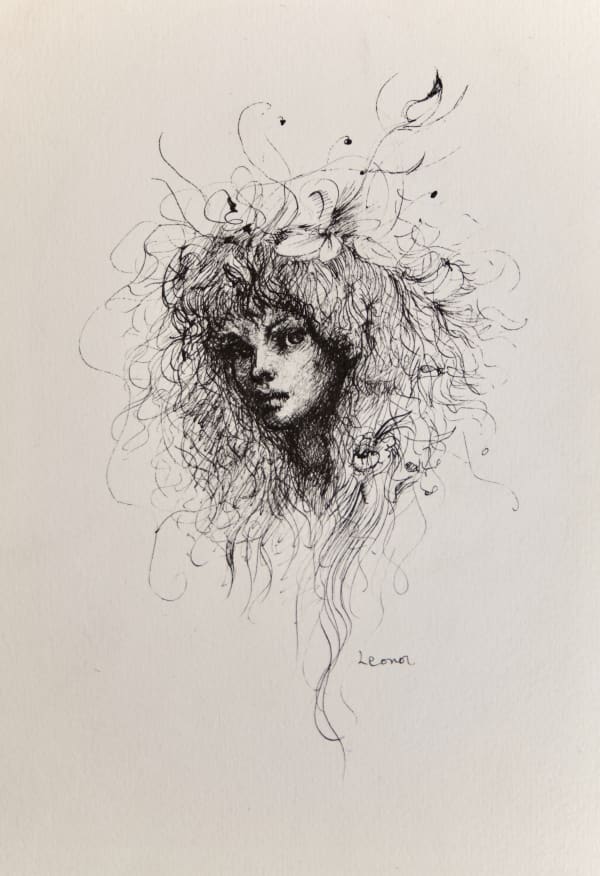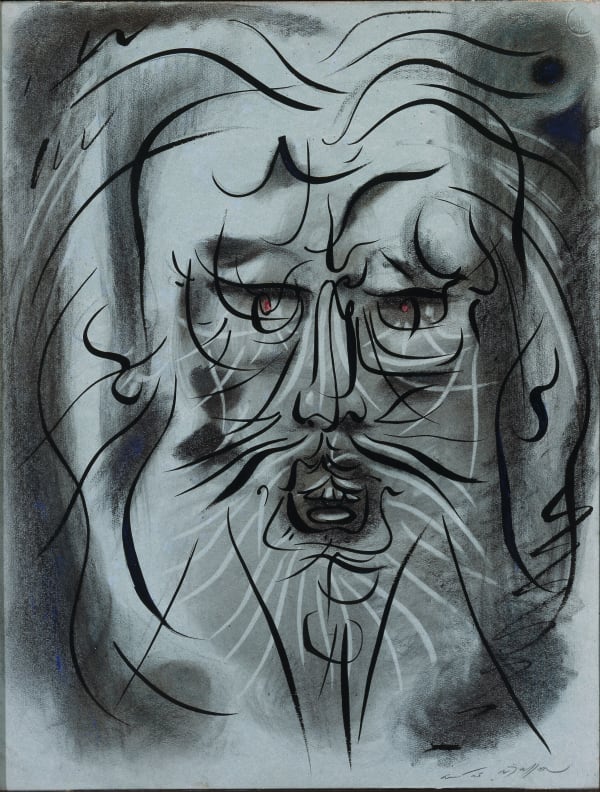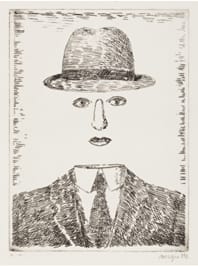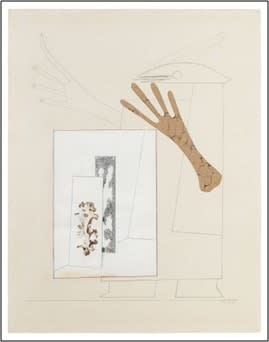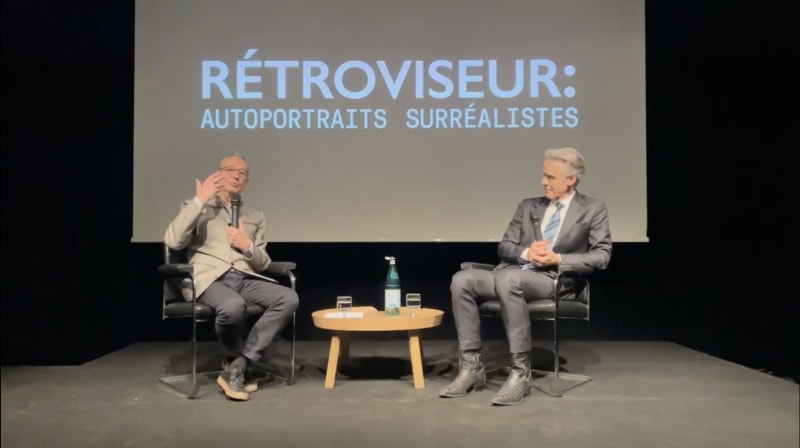Rétroviseur: Autoportraits Surréalistes: Geneva
Rétroviseur: Autoportraits Surréalistes, co-curated with Jean-Hubert Martin.
On the 100th anniversary of the publication of Breton’s Surrealist Manifesto, Olivier Varenne Art Moderne & Contemporain will explore what happened when Surrealists turned their eye on themselves. Self-portraits by Hans Bellmer, Salvador Dali, Marcel Duchamp, Francis Picabia, André Masson, Pierre Molinier and Man Ray will reveal how they chose unconventional means for image-making during an era of awakening self-analysis, exploration of alternative realities and the free creativity of the unconscious mind.
The gallery will also show in its adjacent space self-portraits by contemporary artists, including Johathan Delachaux and Cindy Sherman, for whom central to their practice is the transformation of their image.
Exhibition text from Jean-Hubert Martin:
“My intention was always to get away from myself, though I knew perfectly well I was using myself. Call it a little game between ‘I’ and ‘me’.” Duchamp[1]
The Surrealists’ taste for transgression and transcendence naturally led them to rethink the rendering of their own image. They no longer followed the conventions of classical self-portraiture and the format we have known since the Renaissance where artists capture their image with a sideways glance through a mirror. Instead, their taste for games, and a desire for freedom from the constraints of modern society, lead them to make all sorts of ingenious discoveries.
When Dada came to an end and was torpedoed, André Breton tried to draw writers and artists to his Surrealist movement. In his manifesto Breton laid out his formulation for Surrealism as the actual functioning of thought in the absence of any control exercised by reason. He believed that the unconscious mind held the answer to creativity and to discovering society-changing material. Many artists and writers joined Breton in these beliefs, but some of the radicals, such as Duchamp and Picabia, instead ridiculed his explorations of sleep-walking, dreams and spiritualism.
Despite their attitude Breton maintained a great admiration and respect for these 2 major artists and Duchamp even curated several Surrealist exhibitions.
Picabia and Duchamp’s closest friend was Guillaume Apollinaire who took part in the famous trip in October 1912 to the Jura sealing their friendship during a crazy car ride led by Picabia. Apollinaire's Calligram Self-Portrait is a wonderful testimony to the freedom with which he played with words and images, transcending genres and categories, and which earned him his reputation as the leading impresario of the Paris avant-garde. With Portrait of the artist, Picabia commits a double sacrilege in relation to artistic conventions. He uses a portrait of a little-known artist Eggert to monopolize it. He adds glasses, canvases and the figures of Venus and Mars to the original painting, the gender of which he inverts by feminizing them. He appropriates the painting by signing it and thus raises the question of the value of authenticity attributed to the autograph, just as he makes an allusion to bisexuality.
Duchamp represented himself, on the other hand, with a cast of his face leading to a play on words for the title: moulé vif = brûlé vif = mort ou vif (Moule vive which derives from ‘burnt alive’, and alludes to ‘dead or alive). This works marks Duchamp’s return towards the end of his life to a form of hyperrealism. The varied ways in which Duchamp depicted himself, such as his female alter ego Rrose Sélavy, reveal his views on the shifting and unstable nature of identity. His production of multiples with a slight variance built into their fabrication, such as Self-Portrait in Profile, so that even two editions were rarely identical, also play to this notion.
Duchamp's Self-portrait as Adam after Cranach is a derivative work belonging to the approach of mischievous people who play ping pong with works of art they like. The couple was in fact photographed by Man Ray during the 1924 New Year's Eve party organized by Picabia, entitled Ciné sketch and directed by René Clair. "A sleeping lady dreams of an earthly paradise and crazy sarabands. The division of the stage into three compartments and the use of ceiling projectors illuminating, like a shower, sometimes the bedroom, sometimes the corridor, sometimes the kitchen allowed this incredible impression of simultaneity."[2] The Adam and Eve scene was performed by Duchamp and Brogna Perlmutter, Picabia's mistress before becoming the wife of René Clair.
The approach by the various Surrealist artists to their self-depiction naturally says much about them as individuals. Perhaps it was when painting themselves that these artists had the greatest freedom to explore their belief in the primacy of the imagination - and to heed Herbert Reed’s definition in his introduction to the 1936 International Surrealist Exhibition in London, that a work is to be judged by its “imaginative scope, its intimate revelations, its surprising incoherence, its superreality’.
André Masson, as one of the first painters to embrace Breton’s theories, channelled the subconscious and in addition to exploring the inner workings of his mind, metamorphosis was central to his work. Masson became an avid follower of the Greek philosopher Heraclitus who stated “Out of life, comes death and out of death life… the stream of creation and dissolution never stops”. The latter explains why the artist morphs his image specifically with that of the Greek philosopher, and also superimposes his face on a female body – by doing so, like Magritte, he also plays with what Dali called ‘la double image’.
Man Ray, depicted himself half-shaven with humour, disguised as a woman, or abstractly through the palm of his hand as a nod to prehistoric mark-making, and primitivism. His choice of title for his 1961 autobiography, Self Portrait is also telling.
In common with Man Ray, Dali used transfiguration as his mode. The piece of flayed skin with which Michelangelo represented himself in the Sistine chapel in the Vatican had an influence on Dali as he maintained that the most consistent feature of our representation is not the spirit nor vitality, but the skin.
Bellmer chose eroticism as his vehicle; Magritte an ambiguity of images. His self-portrait, faithful to his conventional dress code (hat and tie), is only a disembodied face of which only the sensory features, that are the eyes, nose and mouth remain. Ceci n’est pas une pipe generated a wonderful misunderstanding, which only gratified Magritte. The avalanche of commentaries and exegeses focused on the semiological question of the relationship between an object and its image. Or, in slang, a pipe is a fellatio, which is perfectly suggested by Magritte's painting (and several drawings). Even Michel Foucault dedicated his learned book to the famous painting without a mention of the sexual meaning.
Max Ernst created ‘Loplop, superior of birds’, as a unique combination of symbols to represent his persona. It is not only his personal symbol, but the presenter of the artist’s interpretations of his own world. Using Freud’s methods Ernst analysed the symbolism of his dreams, cultivated automatic responses and free associations and discovered that for him birds had both a personal and general significance; he is shown as part easel and part human figure with a bird’s head.
The ‘Sphinx of Surrealism’ Leonor Fini’s output revolves around her self-image. Not to be categorized, even as a Surrealist, not only as a lover of Ernst, each work reveals different sides of her personality. She was neatly described as: “dressed eccentrically, with a cat or lioness mask, and a feather wig. A painter of bizarre canvases with figures of metamorphic women, half angel and half skeleton, half plant and half animal, half Amazon and half statue – she incarnated the revolutionary ideal of independence and self-invention.”
Molinier was obsessed with self-imagery and he consistently created self-portraits from his adolescence onwards. It was not until the early 1950s when he sent some images to Breton that his work came to the attention of the Surrealists. He went on to combine his sexual fetish for transvestism with his skill at photomontage.
Victor Brauner, who is not represented in the exhibition, painted Self-portrait with a plucked eye (1931, Center Pompidou, Paris), a premonition of the real loss of his eye a few years later, during a fight with his colleague Dominguez. He thus vindicates the notion of objective chance so dear to the Surrealists.
Dorothea Tanning adopted Freud’s explorations of the subconscious mind and dreams into painting through her blurring of reality and fantasy. Her description of her self-portrait can neatly apply to all of the works in Retroviseur:
“The result is a portrait of myself, precise and unmistakable to the onlooker. But what is a portrait? Is it mystery and revelation, conscious and unconscious, poetry and madness? Is it an angel, a demon, a hero, a child-eater, a ruin, a romantic, a monster, a whore? Is it a miracle or a poison? I believe that a portrait, particularly a self-portrait, should be somehow, all of these things and many more, recorded in a secret language clad in the honesty and innocence of paint.” [1]
[1]Duchamp quoted in J. W. McManus, ‘not seen and/or less seen: Hiding in Front of the Camera’ in Inventing Marcel Duchamp: The Dynamics of Portraiture, ed. A. Collins Goodyear and J. W. McManus, Cambridge, Mass; MIT Press, 2009, p. 64.
[2] P. Achard, "Soir de Paris, les derniers moments de 1924", Paris-Midi, 3 janvier 1925
3] Tanning in 1944, in V. Carruthers, Dorothea Tanning: Transformations, London, UK, 2020, p. 28.
-
 Hans Bellmer, Auto oeil, 1961
Hans Bellmer, Auto oeil, 1961 -
 Hans Bellmer, Autoportrait, 1955
Hans Bellmer, Autoportrait, 1955 -
 Claude Cahun, Entre Nous, 1926-1934
Claude Cahun, Entre Nous, 1926-1934 -
 Man Ray, Autoportrait, 1933
Man Ray, Autoportrait, 1933 -
 Man Ray, Autoportrait , 1929-1930
Man Ray, Autoportrait , 1929-1930 -
 Man Ray, Autoportrait , 1972
Man Ray, Autoportrait , 1972 -
 Man Ray, Autoportrait , circa 1940
Man Ray, Autoportrait , circa 1940 -
 Man Ray, Autoportrait and Emak Bakia solarisés, 1935
Man Ray, Autoportrait and Emak Bakia solarisés, 1935 -
 Man Ray, Autoportrait Self Portrait , 1916-1917
Man Ray, Autoportrait Self Portrait , 1916-1917 -
 Man Ray, Autoportrait , 1924
Man Ray, Autoportrait , 1924 -
 Jonathan Delachaux, Série de Portraits TBC, 2003-2060
Jonathan Delachaux, Série de Portraits TBC, 2003-2060 -
 Jonathan Delachaux, TBC, 2024
Jonathan Delachaux, TBC, 2024 -
 Pierre Molinier, Autoportrait Allongé avec Godemiché, 1968
Pierre Molinier, Autoportrait Allongé avec Godemiché, 1968 -
 Pierre Molinier, Elévation, 1968-1970
Pierre Molinier, Elévation, 1968-1970 -
 Pierre Molinier, Le Festin de Manès, 1960
Pierre Molinier, Le Festin de Manès, 1960 -
 Pierre Molinier, Portraits d'identité, circa 1965
Pierre Molinier, Portraits d'identité, circa 1965 -
 Pierre Molinier, Sans titre
Pierre Molinier, Sans titre -
 Pierre Molinier, Sur le Pavois, 1968-1970
Pierre Molinier, Sur le Pavois, 1968-1970 -
 Cindy Sherman, Untitled (Artist in her Studio), 1983
Cindy Sherman, Untitled (Artist in her Studio), 1983 -
 Francis Picabia, Autoportrait, 1923
Francis Picabia, Autoportrait, 1923 -
 Leonor Fini, Self-portrait, 1965 (1958-1959)
Leonor Fini, Self-portrait, 1965 (1958-1959) -
 André Masson, Héraclite (auto portrait de Masson), 1943
André Masson, Héraclite (auto portrait de Masson), 1943 -
 André Masson, Autoportrait dessinant, 1943
André Masson, Autoportrait dessinant, 1943 -
 Marcel Duchamp, Self Portrait in Profile (Schwarz 344) from To and From Rose Selavy
Marcel Duchamp, Self Portrait in Profile (Schwarz 344) from To and From Rose Selavy -
 Marcel Duchamp, Self-Portrait in Profile from the La Hune Poster, 1959
Marcel Duchamp, Self-Portrait in Profile from the La Hune Poster, 1959 -
 Marcel Duchamp, Morceaux choisis d'après Cranach et 'Relache', 1968
Marcel Duchamp, Morceaux choisis d'après Cranach et 'Relache', 1968 -
 Marcel Duchamp, Self-Portrait in Profile, Paris, Trianon Press, 1959
Marcel Duchamp, Self-Portrait in Profile, Paris, Trianon Press, 1959 -
 René Magritte, Le Paysage de Baucis (Self Portrait with a Hat), 1966
René Magritte, Le Paysage de Baucis (Self Portrait with a Hat), 1966 -
 Salvador Dali, L’Enfant Sauterelle, 1933
Salvador Dali, L’Enfant Sauterelle, 1933 -
 Max Ernst, Loplop présente, 1931
Max Ernst, Loplop présente, 1931
-
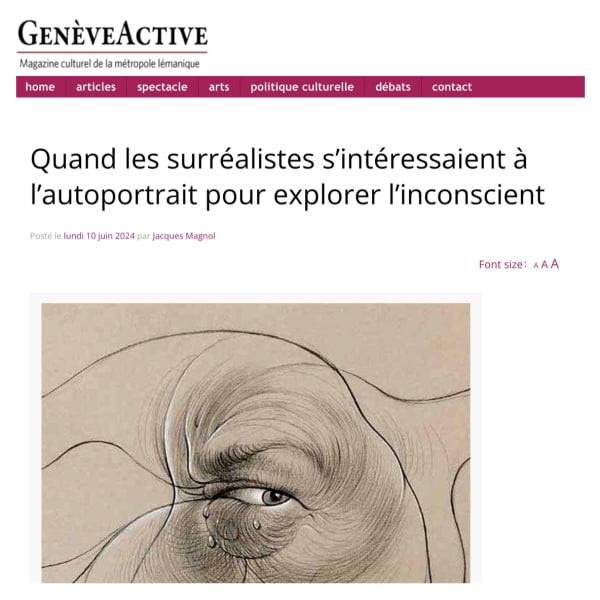
Quand les surréalistes s’intéressaient à l’autoportrait pour explorer l’inconscient
Jacques Magnol, Genève Active, June 10, 2024 This link opens in a new tab. -
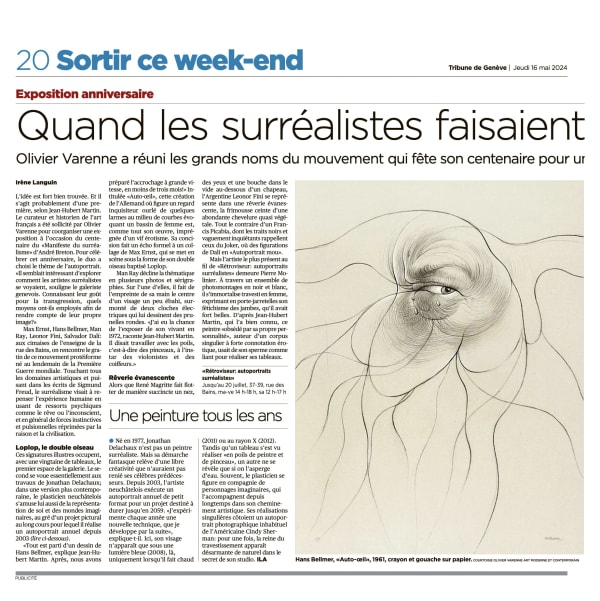
Quand les surréalistes faisaient leur autoportrait
Irène Languin, Tribune de Genève, May 16, 2024 This link opens in a new tab. -
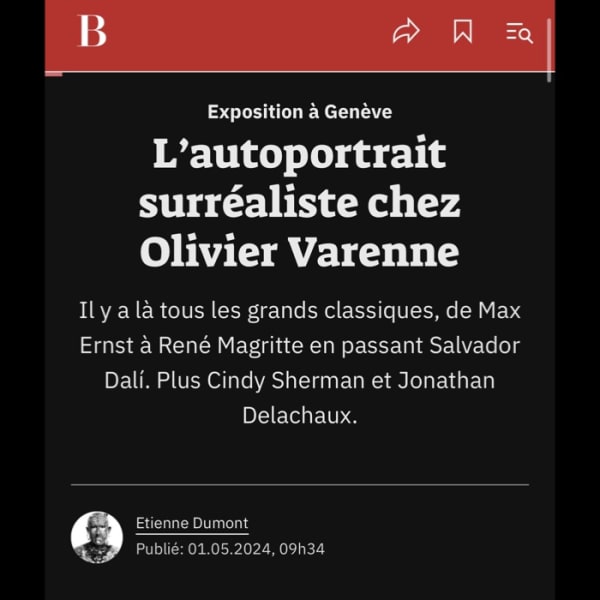
L'Autoportrait surréaliste chez Olivier Varenne
Etienne Dumont, Bilan, May 1, 2024 This link opens in a new tab.



